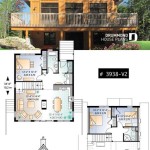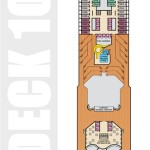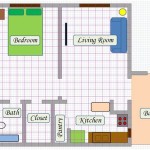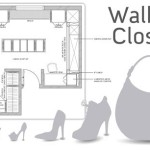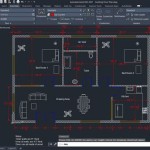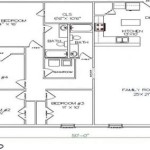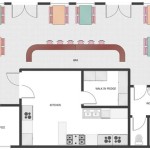A home gym floor plan refers to the specialized layout and design of a designated space within a residence, specifically dedicated to fitness and exercise activities. It involves planning the optimal placement of equipment, workout areas, and storage solutions to create a functional and efficient home gym environment.
For instance, a well-designed home gym floor plan might incorporate a designated area for cardio equipment such as a treadmill or elliptical trainer, a separate zone for weightlifting and strength training with dumbbells, a bench, and a squat rack, and an open space for exercises like yoga, Pilates, or bodyweight workouts. Proper planning ensures that all necessary equipment and workout areas are seamlessly integrated into the available space, fostering a conducive environment for regular exercise.
In this article, we will explore key considerations and provide practical tips for designing an effective home gym floor plan that meets your fitness goals and optimizes the utilization of your home space.
When creating a home gym floor plan, consider the following key points:
- Equipment placement: Optimize space and accessibility.
- Workout zones: Designate areas for cardio, strength, and flexibility.
- Storage solutions: Keep equipment organized and clutter-free.
- Space utilization: Maximize use of available area.
- Flooring: Choose durable and supportive flooring.
- Lighting: Ensure adequate lighting for visibility and safety.
- Ventilation: Promote air circulation during workouts.
- Mirrors: Allow for proper form and alignment.
- Personalization: Add touches that motivate and inspire.
By incorporating these considerations, you can create a functional and efficient home gym floor plan that meets your fitness needs and enhances your workout experience.
Equipment placement: Optimize space and accessibility.
Equipment placement is crucial in home gym floor planning. Careful consideration should be given to the arrangement of equipment to maximize space utilization and ensure accessibility during workouts.
- Create dedicated zones: Divide the gym space into designated areas for different types of equipment and exercises. For instance, allocate a zone for cardio equipment, a separate area for strength training, and an open space for bodyweight exercises or yoga.
- Maximize vertical space: Utilize vertical space by installing wall-mounted storage racks, shelves, or pegboards to store equipment and free up floor space. This is particularly useful for smaller home gyms.
- Consider traffic flow: Plan the layout to allow for easy movement around the gym without any obstacles or cramped spaces. Ensure there is sufficient room to access equipment comfortably and perform exercises safely.
- Prioritize frequently used equipment: Place equipment that you use regularly in easily accessible locations. This will save time and effort during workouts and encourage consistent use.
Optimizing equipment placement not only enhances the functionality of your home gym but also contributes to a safer and more enjoyable workout experience.
Workout zones: Designate areas for cardio, strength, and flexibility.
Creating designated workout zones within your home gym is essential for maximizing space utilization and enhancing your workout experience. Here’s a detailed explanation of each zone:
- Cardio zone: This zone should accommodate equipment that elevates your heart rate, such as treadmills, elliptical trainers, stationary bikes, and rowing machines. Ensure there is enough space to move freely and perform exercises comfortably. Consider placing a TV or music system in this area to keep you entertained during cardio sessions.
- Strength training zone: Dedicate this zone to equipment that targets muscle strength and endurance, including dumbbells, barbells, weight benches, squat racks, and resistance bands. Ensure the flooring in this area is durable and can withstand the impact of heavy weights. Adequate lighting is also crucial for safety and proper form.
- Flexibility zone: This zone should provide space for exercises that improve flexibility and range of motion, such as yoga, Pilates, and stretching. Consider using mats or foam rollers for comfort and support during these exercises. Natural light or large mirrors can be beneficial in this area to enhance visibility and alignment.
- Multi-purpose zone: If space permits, consider creating a multi-purpose zone that can accommodate various types of exercises and activities. This zone can be used for bodyweight exercises, HIIT workouts, martial arts, or even group fitness classes. Ensure the flooring is durable and provides ample cushioning.
By designating specific workout zones within your home gym, you can optimize the use of space, enhance safety, and create a more organized and functional workout environment.
Storage solutions: Keep equipment organized and clutter-free.
Maintaining an organized and clutter-free home gym is essential for both safety and functionality. Effective storage solutions can help you maximize space, keep equipment readily accessible, and minimize the risk of accidents.
Utilize vertical space: Install shelves, pegboards, or wall-mounted racks to store equipment vertically. This is particularly useful for storing items like dumbbells, kettlebells, resistance bands, and foam rollers. Vertical storage frees up valuable floor space and keeps frequently used items within easy reach.
Invest in multi-purpose storage: Look for equipment that doubles as storage. For example, a weight bench with built-in storage compartments can accommodate dumbbells and other accessories. Ottomans with hidden storage space can store yoga mats, towels, or shoes. Multi-purpose storage solutions save space and keep your gym tidy.
Maximize wall space: Install hooks, brackets, or magnetic strips on walls to store items like jump ropes, exercise bands, and yoga straps. Wall-mounted storage keeps equipment off the floor and easily accessible. Consider using clear containers or labeling storage units to quickly identify and retrieve items.
By implementing these storage solutions, you can create a well-organized home gym that supports your fitness goals and enhances your workout experience.
Space utilization: Maximize use of available area.
Optimizing space utilization is crucial for creating a functional and efficient home gym, especially if space is limited. Careful planning and creative use of space can help you fit all the necessary equipment and workout areas into your available area.
- Choose space-saving equipment: Opt for equipment that is compact and versatile. For example, a foldable treadmill or elliptical trainer can be stored away when not in use. Wall-mounted exercise equipment, such as pull-up bars or resistance bands, also save floor space.
- Utilize vertical space: Make the most of vertical space by installing shelves, pegboards, or wall-mounted racks to store equipment vertically. This frees up valuable floor space and keeps frequently used items within easy reach. Consider using stackable storage containers to maximize vertical space efficiency.
- Create multi-purpose areas: Designate areas that can serve multiple purposes. For instance, a yoga mat can be used for bodyweight exercises, stretching, and even as a temporary storage space when not in use. Ottomans with built-in storage can double as seating and equipment storage.
- Declutter regularly: Regularly declutter your home gym to remove any unnecessary items or equipment that is not being used. This helps maintain a tidy and organized space, making it more enjoyable to work out in.
By effectively utilizing space, you can create a home gym that meets your fitness needs without feeling cramped or cluttered, even in limited spaces.
Flooring: Choose durable and supportive flooring.
The flooring in your home gym plays a vital role in safety, comfort, and the longevity of your equipment. Choosing the right flooring material is essential to ensure a supportive and stable base for your workouts.
- Durability: Opt for flooring that can withstand the rigors of regular use, including heavy weights, impact, and potential moisture. Rubber flooring, vinyl tiles, or laminate flooring are durable options designed to handle the demands of a home gym.
- Support: The flooring should provide adequate support and cushioning to reduce stress on your joints and muscles during workouts. Foam underlayment or shock-absorbing mats can be placed under equipment to enhance support and minimize noise.
- Slip resistance: Choose flooring with a non-slip surface to prevent accidents, especially during intense workouts or when using weights. Rubber flooring or textured vinyl tiles provide excellent traction and stability.
- Ease of maintenance: The flooring should be easy to clean and maintain. Look for materials that are resistant to sweat, spills, and dirt. Smooth surfaces and moisture-resistant materials make cleaning and sanitizing your home gym more manageable.
Investing in durable and supportive flooring will create a safe, comfortable, and functional workout environment that supports your fitness goals.
Lighting: Ensure adequate lighting for visibility and safety.
Proper lighting is crucial for a functional and safe home gym environment. Adequate lighting enhances visibility, reduces the risk of accidents, and creates a more motivating atmosphere for your workouts.
- Natural light: If possible, position your home gym near windows or skylights to take advantage of natural light. Natural light provides excellent visibility and can boost your mood during workouts.
- Overhead lighting: Install bright overhead lighting to illuminate the entire gym space evenly. Choose fixtures that provide diffused light to avoid harsh shadows or glare.
- Task lighting: Consider adding task lighting near specific workout areas, such as a mirror or weightlifting bench. Task lighting provides focused illumination for detailed exercises or reading workout instructions.
- Dimmable lighting: Dimmable lighting allows you to adjust the brightness to suit different activities. For example, you may prefer brighter lighting for intense workouts and softer lighting for yoga or stretching.
By ensuring adequate lighting in your home gym, you can create a safe, well-lit space that supports your fitness goals and enhances your overall workout experience.
Ventilation: Promote air circulation during workouts.
Proper ventilation is crucial for maintaining a healthy and comfortable environment in your home gym. Adequate air circulation helps regulate temperature, reduces humidity, and removes stale air, creating a more enjoyable and productive workout experience.
To ensure effective ventilation, consider the following strategies:Open windows and doors: If possible, open windows and doors during workouts to allow fresh air to circulate. Natural ventilation helps remove moisture and odors, keeping the air fresh and invigorating.
Install exhaust fans: Installing exhaust fans in the ceiling or walls can help remove stale air and excess moisture. Exhaust fans are particularly effective in areas where there is a lot of sweat or humidity, such as near cardio equipment or weightlifting zones.
Use air purifiers: Air purifiers can help remove pollutants, dust, and allergens from the air, improving air quality and reducing respiratory irritation. Consider using HEPA filter-based air purifiers for optimal air purification.
By implementing these ventilation strategies, you can create a well-ventilated home gym that promotes a healthy and comfortable workout environment, allowing you to focus on your fitness goals without distractions.
Mirrors: Allow for proper form and alignment.
Mirrors are an essential element in a well-equipped home gym as they provide visual feedback during workouts, allowing you to monitor your form and make necessary adjustments.
- Real-time feedback: Mirrors offer immediate visual feedback, enabling you to observe your body movements and identify areas where your form may be lacking. This real-time feedback helps you correct improper form, reducing the risk of injuries and maximizing the effectiveness of your exercises.
- Proper alignment: Mirrors help you maintain proper alignment and posture during exercises. By observing your reflection, you can ensure that your body is positioned correctly, minimizing strain on muscles and joints. Proper alignment also enhances the efficiency of your workouts and helps prevent muscle imbalances.
- Motivation and form tracking: Mirrors serve as a motivational tool, allowing you to track your progress and witness the results of your hard work. Seeing yourself perform exercises correctly can boost your confidence and encourage you to push your limits safely.
- Safety: Mirrors can enhance safety in your home gym by providing a wider field of view. You can observe your surroundings and ensure that you have ample space to perform exercises without any obstacles or potential hazards.
By incorporating mirrors into your home gym floor plan, you create an environment that supports proper form, alignment, and safety, ultimately maximizing the effectiveness and enjoyment of your workouts.
Personalization: Add touches that motivate and inspire.
Personalizing your home gym can transform it from a mere workout space into a sanctuary that fuels your motivation and inspires you to achieve your fitness goals. By incorporating personal touches that resonate with you, you create a unique and inviting environment that encourages you to embrace your workouts with enthusiasm.
- Display motivational quotes or artwork: Surround yourself with words and images that uplift and inspire you. Display framed quotes that resonate with your fitness journey or hang artwork that reflects your aspirations. These visual reminders will provide a boost of motivation whenever you step into your home gym.
- Incorporate personal photos or achievements: Display photographs of yourself achieving your fitness milestones or competing in events. These visual cues will serve as a constant reminder of your progress and the hard work you have put in. They will inspire you to continue pushing forward and strive for even greater accomplishments.
- Create a dedicated display for fitness goals: Set up a small bulletin board or whiteboard where you can write down your fitness goals, track your progress, and celebrate your achievements. This visual representation of your journey will keep you focused and motivated as you work towards your objectives.
- Add plants or other natural elements: Incorporating plants or natural elements into your home gym can create a more inviting and refreshing atmosphere. Plants not only purify the air but also have a calming effect, reducing stress and improving overall well-being. Natural elements, such as wood or stone accents, can add warmth and a touch of the outdoors, making your home gym feel like a more natural and tranquil space.
By personalizing your home gym with touches that motivate and inspire you, you create a space that truly reflects your fitness aspirations and supports your journey towards achieving your goals.





![Complete 150 Square Feet Home Gym [Gym Floor Plan] Home Gym Resource](https://i3.wp.com/i.pinimg.com/736x/06/5f/4f/065f4f05d77e7afd6c05ce468a255d73.jpg)




Related Posts

